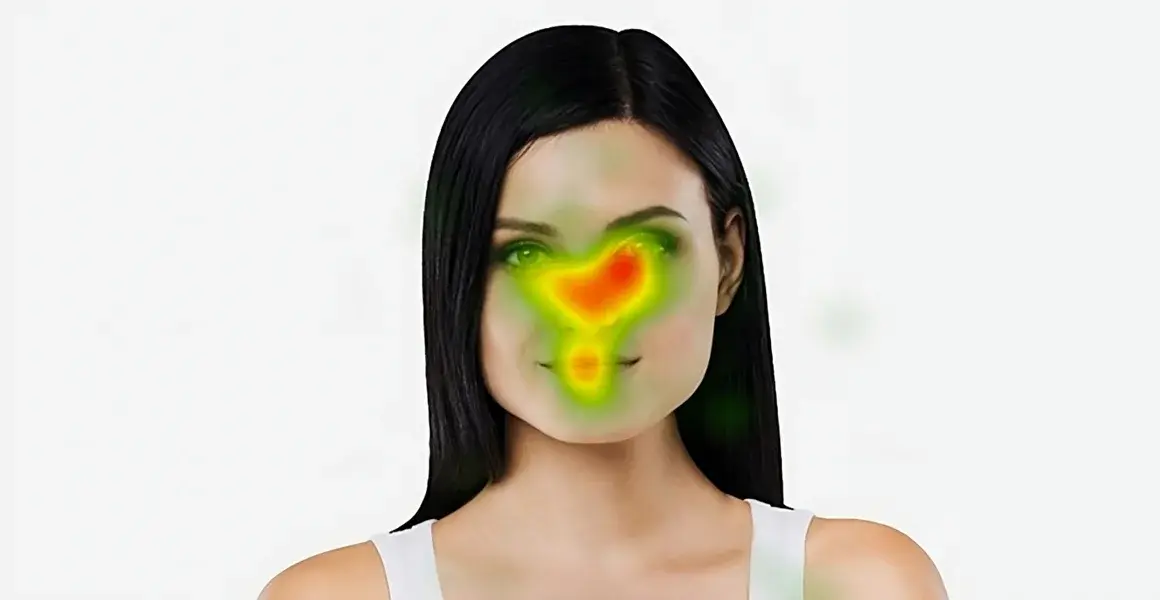Neuromarketing Examples II
Advertisements where brands spend large sums of money now only attract the attention of the consumer for a few seconds. In this case, brands cannot convey the desired message to the consumer. On the other hand, it is possible to use advertisements more effectively with a neuromarketing-based design.

Advertisements do not attract the attention of today's consumers, who are exposed to dozens of advertisements during the day. Even if it does, the consumer only looks at the ad for a few seconds. He goes on with his life without further investigation. For this reason, we will focus on this subject in our article on neuromarketing examples today.
EyeTracking test with female subjects
In these two images in which the female figure is used, the sizes and designs of the figures are the same. On the other hand, in the second image, consumers looked at the logo more than in the first image. So why?

Humans are naturally empathetic creatures.
Imagine you are sitting across from your friend in a cafe and talking. What would you do if your friend who was looking at you while talking suddenly started to look behind you instead of at you? You'll most likely turn around and look at the same place.
After the person in front of you yawns, you yawn, etc. movements originate from mirror neurons in the brain. And it has to do with our ability to empathize. For more detailed information on this subject, you can read our Mirror Neuron and Its Effect on Advertising article.
The differences in images 1 and 2 stem from this.
In both images, almost all of the ad is composed of a female figure. In other words, we can say that the focus of the advertisement is the female figure. For this reason, the consumer looking at the advertisement will see this figure first. The difference between the two is that in Figure 1, the eyes of the female figure are looking at the camera. In Figure 2, the eyes of the female figure are looking at the logo.
At this point, our brain empathizes with the woman in the ad, regardless of whether it is a photograph or not. And he looks at the point where he is looking, as described above. In such a case, the consumer will look at the message the brand wants to give. In this advertisement, the logo was used instead of the message, but in another advertisement, the product or slogan, etc. available.
A similar result emerges when the same research is done with male subjects. The image below shows the heatmap results of the test with male subjects.
EyeTracking test with male subjects
Based on these studies, the following can be said. If the face of the figure will appear large in the advertisement works, the design agency should pay attention to its point of view. This information will also form a basis for future designs.

We, as Designneuro, enjoy using the knowledge we have gained from our work with ThinkNeuro in all our works as a creative agency.